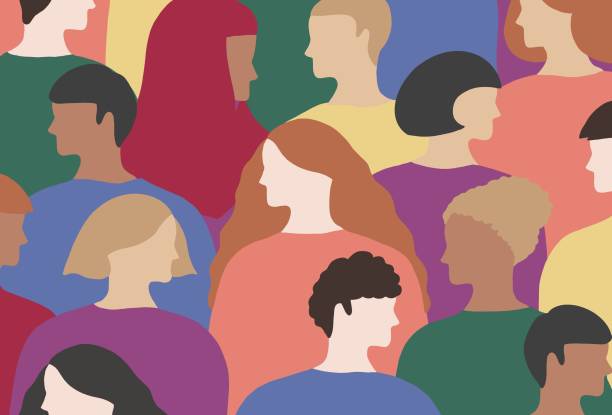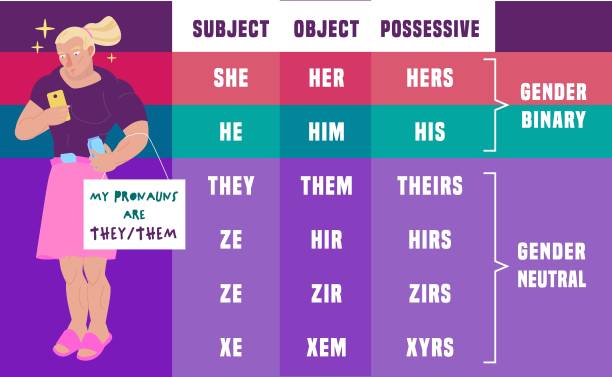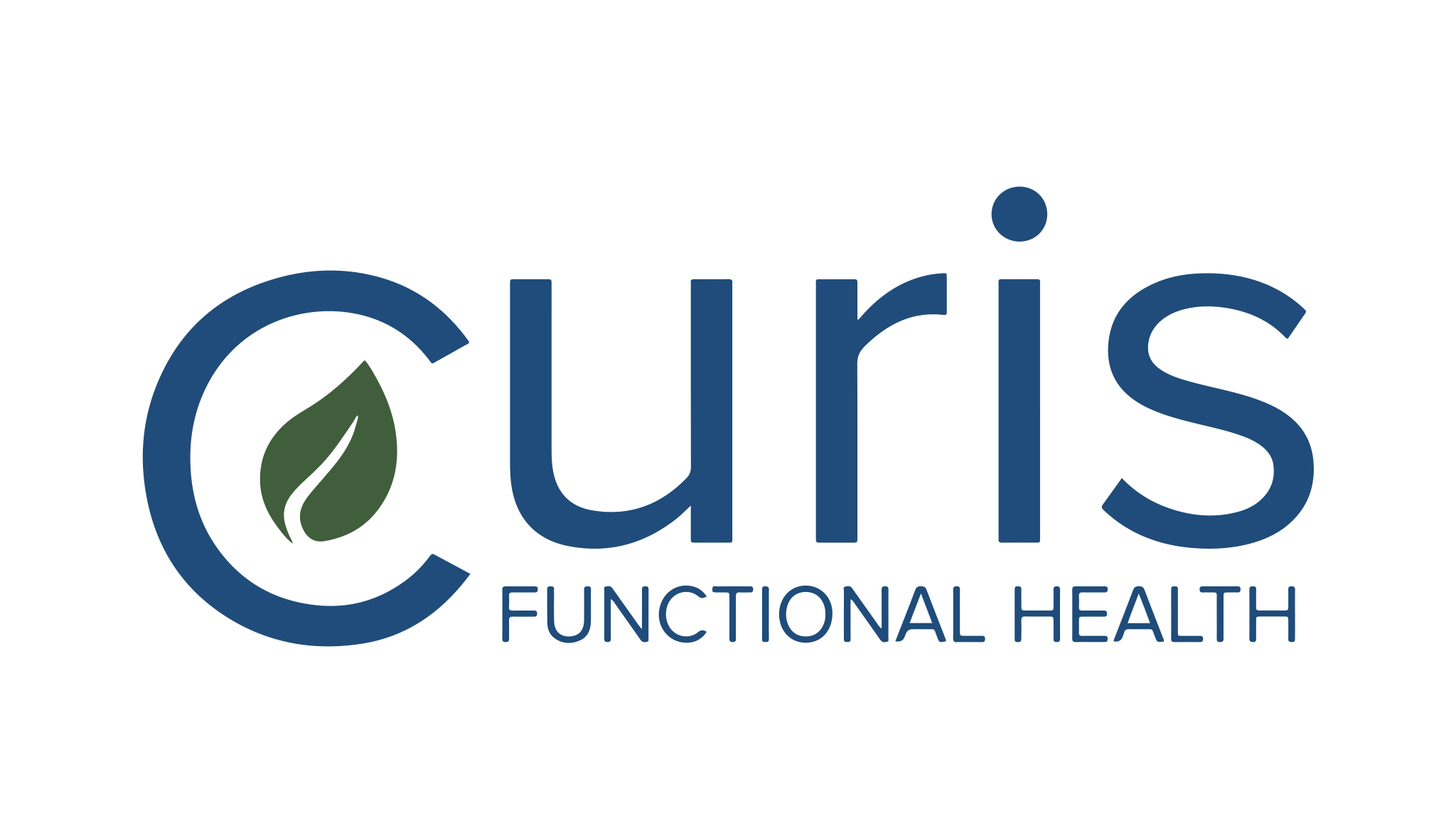If you are just joining us for the All About Spectrums three-part blog series, welcome! Though this blog post can be read independently, it would be helpful to visit Part 1: Tips for Collaborative Conversation, where this conversation began and for a list of previously defined terms. To bring everyone up to speed, here is a quick reminder of what inspired this discussion of spectrums: My mom and I were eating breakfast together in a small hotel café when she decided to inquire about how a couple consisting of a transgender man and a transgender woman have sex. Shocked by her bluntness? So was I! Following the Tips for Collaborative Conversation, I moved through my initial reaction towards an open discussion of mutual learning. In Part 2 of this series, I will discuss the first phase of explanation to tackle my mom’s loaded question by providing explanations of what is gender identity, why is gender identity a confusing topic for many of us, what distinguishes gender identity from sexuality, and what do I mean by the word spectrum.
As a disclaimer, all of what will be discussed is subject to change and evolve as more people share their authentic selves and diversity flourishes, instead of being stunted by fear and forced to conform into boxes that do not really fit. I am simply sharing to the best of my ability, and I hope that some or all of this will be helpful.

Spectrum
Spectrum is typically defined as a scale between two extremes, or possibly more known as a band of colors, such as a rainbow. For our purposes, I will be referring to spectrum more as a continuum where someone can exist at any point on multiple spectrums simultaneously. By using the term, spectrum, I am also acknowledging the natural variety of life.
Unpacking Loaded Questions
Unpacking my mom’s question took a few iterations. Firstly, my mom was asking about the couple from the lens of gender being limited to the binary of boy/man/male and girl/woman/female. She also assumed that when this couple has sex they would want to only use the anatomy they were born with, which is both a denial of any discomfort they may experience about their bodies, an assumption about their experiences of themselves and each other, and a restricted view of sexuality. Additionally, she wondered about their sexual orientations before and after transitioning, assuming both people had transitioned. To begin, I started with the two sets of spectrums: gender identity and sexuality.

Gender Identity
Gender does not exist in the binary, but instead on a continuum, as described above. As such, gender identity can occur within what Western culture outlines in limited categories of a gender binary of man and woman, and between or separate from these. This does not mean that gender identities that fall within the gender binary are bad or wrong, because there is a place for these. Rather there is now, and hopefully more in the future, acknowledgement and recognition of other gender identities. Anyone who has not given much thought about their own gender, usually because their assumed gender matched their assigned sex at birth, may find it challenging to understand someone else’s gender when it does not fit within the traditional gender binary (Brill & Kenney, 2016).
For the above example referenced by my mom, a man was assigned female at birth by the doctor who delivered him based on his physical anatomy and he coupled up with a woman who was assigned male at birth based on her physical anatomy. For this example that my mom specifically asked about, we are assuming that both identify as transgender and on the ends of the male/female spectrums that align with the gender binary, but it is very possible that a couple resembling this example would identify differently. Both may have experienced discrepancies between their bodies and their minds, and both, individually, may have decided to find ways to align their bodies, through transitioning and their gender expressions, with their gender identities. With a statement like this, it is important to remember that being a transgender person is not a mental condition but rather a medical condition. A person experiencing gender dysphoria, will have distress, anxiety, or discomfort about their gender and/or assigned sex at birth (Brill & Kenney, 2016). A person is born transgender, and medical intervention may be a necessary component of aligning a person’s body with their brain. Additionally, transgender individuals may also want to simply be accepted as their gender identity with the body that they have. Transgender individuals may also desire to simply be seen and accepted as being their gender identity without the adjective, ‘transgender.’ Trans Student Educational Resources (2014) offers a helpful graphic for visualizing all the spectrums I will be discussing here and in Part 3: Gender Expression called The Gender Unicorn, designed by Landyn Pan and Anna Moore (TSER, 2014).
For the fictional couple in the example, I am assuming the following based on my mom’s question: the trans woman identifies exclusively as a woman, 100% as a woman, 0% man, and 0% any other gender, while the trans man identifies exclusively as a man, 100% as a man, 0% woman, and 0% other gender. I am only using percentages here as a way for me and the reader to imagine, visualize, and quantify this in a similar way, but gender is not something that can be quantified or calculated, unless someone decides to explain their gender in this way. Gender is rather a unique, important, and inextricable part of someone’s identity. As such, gender identity is a huge part of someone being their authentic self. Gender is much more complicated and expansive than chromosomes or physical anatomy, especially when we learn how little chromosomes and physical features actually align with previous definitions of assigned sex at birth. I want to emphasize that gender, no matter where it falls on, around, or off of any spectrum is valid and not a choice, though many choices are made with expressing one’s gender, following or not following traditional gender expectations (Brill & Kenney, 2016).
Gender identity is an internal experience of one’s sense of self and can include identifying as part or wholly female/woman, part or wholly male/man, neither, or part or wholly other gender(s). As an innate part of a person’s identity, gender identity is an internal experience that others cannot know unless they ask (Brill & Kenney, 2016). Most individuals know at a very young age what their gender identity is, including cisgender, transgender and non-binary children. Additionally, a person with limited exposure to genders beyond the gender binary may experience feeling different but lack the language to describe themselves. Through familial or social pressures, and even the potential for or actual physical and/or emotional harm or death, many non-binary and transgender people live as a gender identity that they would not claim under more accepting and supportive circumstances. Doing so can be extremely mentally and physically damaging, as is clear when faced with the statistic of 40% or more of trans and non-binary people attempting suicide (Brill & Kenney, 2016, Save.org, 2018). As a transgender person begins to explore their gender identity, the various gender identity spectrums may change. This does not mean that their gender identity is changing, but that they are becoming more authentically themselves and gaining clarity through experimentation and exploration. Very few people will decide at a later point that they are not transgender, though this does happen. Additionally, someone who identifies as gender fluid, experiences their gender as shifting and not static, flowing within and between more than one gender (Brill & Kenney, 2016). Back to the case example of the couple in my mom’s question, I imagined the context of this couple being adults who grew up in less understanding and aware circumstances resulting in the trans man spending many years living as and identifying as a woman, despite the discomfort of doing so, and the trans woman, similarly, living many years as a man before being able to live authentically.

Pronouns
As we begin to learn language, we also learn ways to refer to people without always using their names. Many pronouns in the English language are assigned to a specific gender within the male/female binary. Thankfully, language continues to evolve, words are created, and meanings shift. With all the amazing strides being made towards equal rights and acceptance for marginalized communities, personal pronouns are getting revamped. Female/Woman/Girl pronouns include: she, her, hers, herself (TSER, 2014). Male/Man/Boy pronouns include: he, him, his, himself. Gender neutral pronouns include: they, them, theirs, themself/themselves (all referring to a singular person!), and ze, hir/zir, hirs/zirs, hirself/zirself (TSER, 2014, MYPRONOUNS.ORG, n.d.). Individuals may prefer that their name is used instead of any pronouns. As a person becomes more authentically themselves, they may try on different pronouns to find out what feels right. Some readers may have noticed the use of gender neutral pronouns throughout this blog series! Using correct pronouns is incredibly important, so it is helpful to ask what for a person’s pronouns and provide your own. This will send the message that you care, you are supportive, you do not want to assume, you do not want to harm, and you acknowledge a person’s complete self and their existence in the world. Mistakes happen, and there will probably be times that you accidentally misgender someone (I know I have!), but the acknowledgement of the mistake and attempt to continue trying makes such a difference (MYPRONOUNS.ORG, n.d.).
Sexuality/Sexual Orientation

Sexuality is the expression of sexual feelings and attractions. Similarly, sexual orientation is about who a person is attracted to physically, romantically, or otherwise (TSER, 2014). Just like gender identity, sexuality exists on a spectrum. Also, like gender identity, sexual orientation is not a choice. Sexual orientation can be a limiting term because it tends to group physical, romantic, and emotional attraction as all occurring towards the same type of person. This, however, is not always the case. Physical attraction exists on three spectrums: attraction to women, attraction to men, and attraction to other gender(s). Similarly, emotional attraction exists on its own set of the same three spectrums. Additional spectrums can be added including level of attraction to femininity or masculinity, regardless of gender identity. I will be discussing femininity and masculinity more in Part 3: Gender Expression of this blog series. Similar to the spectrums of gender identity, an individual can have different levels of attraction on each spectrum, including lack of attraction to any or all genders. There are many contextual factors that can result in attraction shifting over time and situation, but, again, sexual orientation is not a choice.
As a society, labels are created to categorize based on sexuality and sexual orientation and have become something that is claimed as part of our identity. Labels can be helpful for creating community and uniting marginalized populations, especially to fight for equal rights. But labels can also be limiting and not convey all the complexities of who we are as humans. Many of these labels are gender-dependent and focused only on physical attraction, which is why the separation of gender identity and sexuality can be so confusing. For example, homosexual means that a person of one gender is sexually attracted to a person of the same gender, and heterosexual means that a person of one gender is sexually attracted to someone of the other gender. Both these terms usually assume that all parties identify within the gender binary of man and woman, and usually assume that all parties are cisgender. I want to note here that the term homosexual, because of its history of being used in a derogatory way medically, politically, religiously, and otherwise, is rarely used to self-identify today. Terms like lesbian and gay also imply knowing the gender identity of both the individual who is labeled and the person they are attracted to or in a relationship with, though it is important to let people label themselves. Instead of relying on labels, the various spectrums provide a more accurate portrayal of who we are, in each of our uniqueness.
For the couple in my mom’s question, I am going to very cautiously assume they would consider themselves a heterosexual couple of man and woman. As I told my mom, it is none of my business what is between their legs nor how they express themselves sexually. As a man, he may or may not have had hormone replacement therapy or gender affirming surgeries, but no matter what he is still a man. Without surgery, he may feel more fully himself using a prosthetic penis that, when worn by him, is his penis, or he may not use a prosthetic penis at all. And as a woman, she may or may not have had hormone replacement therapy or had gender affirming surgeries, but no matter what she is still a woman. How this couple expresses themselves sexually and romantically is for them to communicate about and decide. I would imagine that no matter how this couple has sex, he wants to feel like and be seen as the person that he is by the person he loves, and she wants to feel like and be seen as the person that she is by the person that she loves, and no one, except the participating parties, is entitled to tell them what that looks like.
More Layers of Spectrums
In this blog post, I dove into the many layers of gender identity and sexuality spectrums. I discussed the importance of pronouns as a means of acknowledging the whole selves of all people. Another important factor in this discussion to try to answer my mom’s question is the concept of gender expression, which will be tackled in Part 3: Gender Expression of All About Spectrums. A list of terminology can be found at the end of Part 1: Tips for Collaborative Conversations, and additional terms discussed in this segment can be found below.
*This story was told with permission from my mom. Thanks, mom!
Terminology
*Note: Language is constantly evolving and many of these terms may change in the future. Terms are, generally, ordered as they appeared in the text above. Additional terms were added to the list for clarity.
Gender Terms:
- Gender dysphoria: Discomfort, distress, and/or anxiety a person experiences regarding their gender and/or assigned sex at birth (Brill & Kenney, 2016). Not all transgender people have gender dysphoria.
- Gender fluid: Gender identity where someone’s gender or genders are not static but change and shift (Brill & Kenney, 2016).
Sexuality Terms:
- Homosexual: Sexual attraction to people of the same gender, usually understood within the context of the gender binary. Due to history of using this term in derogatory way, a preferred term is usually ‘gay.’
- Heterosexual/Straight: Sexual attraction to people of the other gender, usually understood within the context of the gender binary.
- Lesbian: A woman with sexual, romantic, and/or emotional attraction to other women (Brill & Kenney, 2016). A woman in a lesbian relationship may or may not identify as a lesbian.
- Gay: A term describing anyone with sexual, romantic, and/or emotional attraction to someone of the same gender (Brill & Kenney, 2016).
- Asexual: A term for when a person does not feel sexual attraction. This does not exclude the possibility of emotional or romantic attraction (Brill & Kenney, 2016).
- Bisexual: Umbrella term for people who have sexual, romantic, and/or emotional attraction to more than one gender (Brill & Kenney, 2016). Typically, those identifying with this term use it with the assumption of gender being binary and usually cisgender.
- Pansexual: A term for when a person feels sexual, romantic, and/or emotional attraction to multiple genders or any gender. Pansexuality recognizes that gender and attraction are not binary (Brill & Kenney, 2016).
References
Brill, S., & Kenney, L. (2016). The transgender teen: A handbook for parents and professionals supporting transgender and non-binary teens. Jersey City, NJ: Cleis Press.
MYPRONOUNS.ORG: Resources on personal pronouns (n.d.). Retrieved from https://www.mypronouns.org/
SAVE: Suicide Awareness Voices of Education (2018). Suicide Facts. Retrieved from https://save.org/about-suicide/suicide-facts/
TSER: Trans Student Educational Resources (2014). The Gender Unicorn. Retrieved from https://www.transstudent.org/gender/
